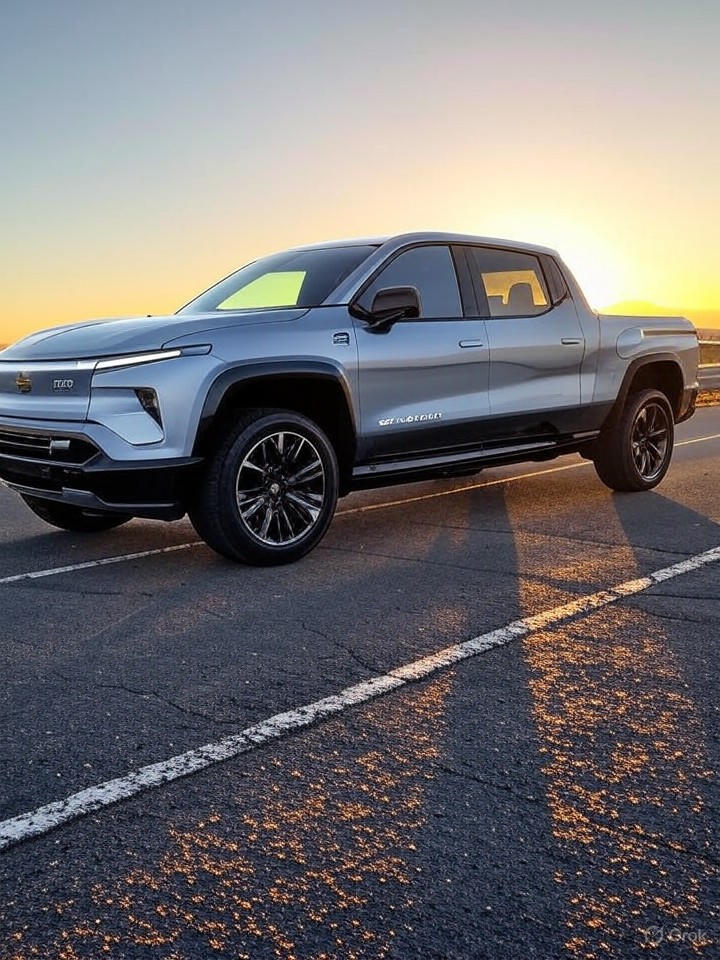In a feat that underscores the evolving capabilities of electric vehicles, General Motors Co. has claimed a new benchmark in EV endurance with its Chevrolet Silverado EV. Engineers at the automaker recently piloted a 2026 Silverado EV Max Range Work Truck model across 1,059.2 miles on a single battery charge, eclipsing the prior record of 749 miles set by a Lucid sedan. This achievement, conducted over seven days on public roads near GM’s Milford Proving Ground in Michigan and around Detroit’s Belle Isle, highlights not just battery prowess but also the strategic optimizations that can extend range far beyond standard estimates.
The test vehicle, equipped with a massive battery pack estimated at over 200 kilowatt-hours, adhered to production specifications but incorporated minor modifications like aerodynamic wheel covers and low-rolling-resistance tires. These tweaks, combined with hypermiling techniques—driving at speeds as low as 25 mph to minimize energy consumption—allowed the truck to more than double its EPA-rated range of 493 miles. GM’s team rotated drivers in shifts, ensuring continuous operation without recharging, a process that demanded meticulous planning to avoid depleting the battery prematurely.
Engineering Ingenuity Behind the Record
Details from the drive reveal a blend of innovation and pragmatism. As reported by The Verge, the Silverado EV’s Ultium platform played a pivotal role, leveraging advanced cell chemistry for superior energy density. Unlike typical consumer scenarios, where acceleration and highway speeds drain power quickly, this record attempt prioritized efficiency, with the truck averaging under 20 mph over the marathon journey. Such conditions aren’t replicable in everyday use, but they demonstrate the untapped potential in EV hardware when pushed to extremes.
Industry observers note that this isn’t an official Guinness World Record, as it lacked independent verification, yet it serves as a powerful marketing tool for GM amid intensifying competition in the electric pickup segment. Rivals like Ford’s F-150 Lightning and Rivian’s R1T offer ranges around 300-500 miles, but none have attempted such an extended single-charge demonstration. The Silverado’s performance, as detailed in Motor1, underscores how software calibrations and driver behavior can dramatically influence outcomes, raising questions about the relevance of EPA figures in real-world applications.
Implications for the EV Market and Consumer Expectations
For industry insiders, this record illuminates broader trends in battery technology and vehicle design. GM’s investment in larger packs contrasts with efforts by Tesla and others to optimize aerodynamics and weight for efficiency. According to Car and Driver, the slow-speed strategy effectively halved energy use per mile, a tactic that could inform future autonomous or fleet operations where speed is secondary to endurance. However, critics argue that such feats, while impressive, may mislead consumers expecting similar results in daily driving, where traffic, cargo, and climate control sap range.
Looking ahead, this milestone could accelerate adoption in commercial sectors like delivery and construction, where long-haul capability without frequent charging is prized. GM plans to roll out the 2026 Silverado EV with enhanced features, potentially incorporating lessons from this test to refine over-the-air updates for better efficiency. As Electrek points out, the drive’s success challenges assumptions about EV limitations, particularly for heavy-duty trucks, and positions GM as a leader in pushing boundaries.
Challenges and Future Horizons in Electric Mobility
Despite the triumph, hurdles remain. The seven-day duration highlights the impracticality for most users, and environmental factors like temperature weren’t detailed, which can swing range by 20% or more. Publications such as Electrive emphasize that while the Silverado’s battery tech is cutting-edge, scaling such endurance to affordable models requires cost reductions in materials like lithium and nickel.
Ultimately, this record signals a maturation in EV engineering, where hardware meets human ingenuity to redefine possibilities. For automakers, it sets a high bar, prompting investments in next-gen batteries that could one day make 1,000-mile ranges routine, not exceptional. As the industry shifts toward electrification, feats like this from GM may well catalyze innovations that benefit fleets and individual owners alike, bridging the gap between laboratory potential and on-road reality.




 WebProNews is an iEntry Publication
WebProNews is an iEntry Publication